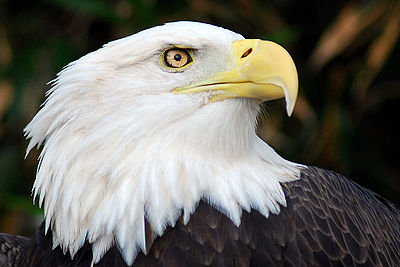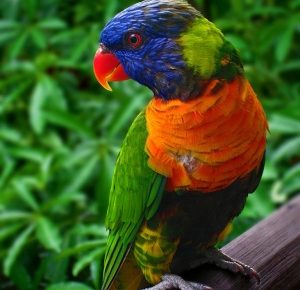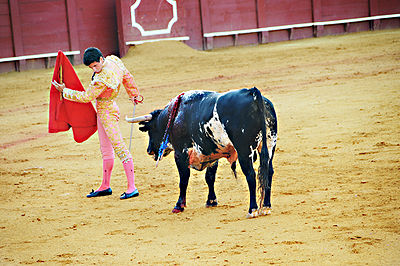
The Bald Eagle, a most majestic bird, is native to North America. Its habitat ranges in areas of rivers, lakes and seacoasts.
The American Bald Eagle was removed from the Endangered and Threatened Wildlife and Plants list of the Interior Department in June of 2007. The Bald Eagle is still protected by the Migratory Bird Treat Act and the Bald and Golden Eagle Protection Act. It is estimated that there are about 9,789 breeding pairs in the U.S.
Bald Eagles build their nests above ground with sticks. The female lays from 1-3 eggs and incubation is 35 days. Both parents care for the young. At 10 weeks old, eaglets are ready to leave the nest. When eagles mate, it is a lifetime commitment.
Adult Eagles have brown/black backs and breasts with white heads, necks and tails, yellow feet and bills. At one time the color white was called bald. Eagles are fully mature at 5-6 years old.
Female eagles are slightly larger than the males. Eagles are 35-40 inches long and have a wingspan of 7-8 feet. They weigh about 10-14 lbs. and are able to lift only about 4 lbs. which prevents them from pursuing larger fish.
The eagle’s diet consists mainly of fish, but they also feed on small mammals, water birds and carrion. They can swim as long as the water is not too cold.
When the Bald Eagle loses a feather on one wing, it will shed the corresponding feather on the other wing to maintain aerodynamic balance.
The eagle’s lifespan in the wild can be 30-35 years. In captivity, they have been known to live up to 50 years. Eagles can fly up to 10,000 feet high and up to 35-40 miles per hour. The can dive at speeds up to 100 mph. An eagle’s keen eyesight allows it to see a fish up to a mile away.
The Bald Eagle became the National Emblem of the United States in 1782 when the great seal was adopted.
Video
Related articles:



